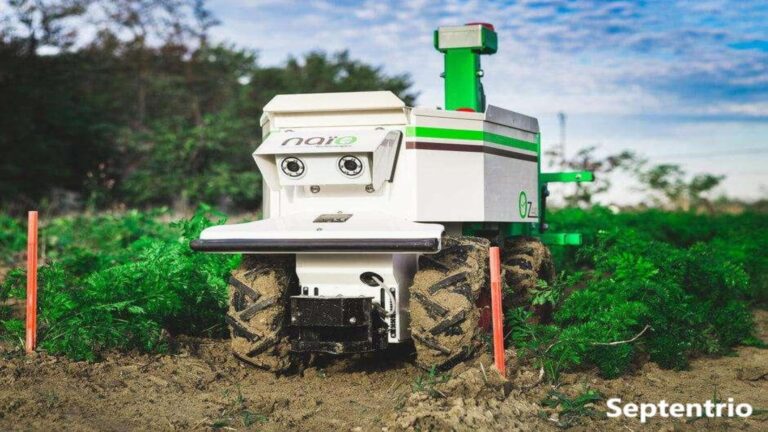In the complex and demanding environment of modern port logistics, where operational efficiency and safety are paramount, reliable positioning technology forms the critical foundation for automated operations. The AsteRx RBi3 Pro+ from Septentrio stands as a premier Resilient GNSS receiver, specifically engineered to meet the rigorous demands of port automation and container handling applications. This fully integrated GNSS and Inertial Navigation System (INS) receiver delivers centimeter-level accuracy and unwavering reliability for automated guided vehicles (AGVs), rubber-tired gantry cranes, and container stacking systems. Unlike basic GNSS components, this complete Septentrio receiver solution is built to withstand the unique challenges of port environments, ensuring consistent performance in all weather conditions and operational scenarios.
Port operations present exceptional challenges for electronic equipment, including constant exposure to saltwater corrosion, temperature extremes, high humidity, and continuous mechanical vibration from heavy machinery. The Septentrio AsteRx RBi3 Pro+ addresses these challenges through its IP69K-rated housing, providing superior protection against high-pressure washing, salt spray, and dust ingress. This robust construction ensures reliable operation when mounted on various port equipment, from quay cranes to terminal trucks. Beyond physical durability, the electromagnetic environment in modern ports is increasingly complex. The concentration of communication systems, radar equipment, and power electronics can create significant GNSS jamming conditions, while the strategic importance of port operations makes them potential targets for GPS spoofing attacks. The AsteRx RBi3 Pro+ incorporates advanced Anti Jamming GNSS technology through Septentrio’s patented AIM+ system, which continuously monitors and mitigates interference signals. This ensures maintained accuracy and reliability, safeguarding automated operations against both unintentional interference and malicious spoofing attempts.
The integration of inertial navigation technology makes this Resilient GNSS receiver particularly valuable in port applications. When equipment moves between containers or under crane structures where satellite signals may be partially obstructed, the integrated INS provides continuous positioning and attitude data. This seamless transition between GNSS and inertial navigation prevents interruptions in automated guidance systems, maintaining precise container handling and preventing operational delays. The receiver’s support for all major satellite constellations ensures strong satellite availability and rapid convergence to centimeter-level RTK accuracy, essential for precise container positioning and yard management. The Septentrio AsteRx RBi3 Pro+ maintains the reliability expected from high-quality land surveying equipment, delivering the precision required for efficient port operations and optimal space utilization.
Implementation into port equipment is streamlined through the receiver’s versatile connectivity options, including CAN-FD, Ethernet, and multiple serial interfaces. This enables straightforward integration with vehicle controllers, crane systems, and terminal operating systems. The accompanying RxTools software provides port engineers and technicians with an intuitive interface for receiver configuration, real-time performance monitoring, and data logging. Through RxTools, users can easily verify system health, monitor satellite tracking status, and diagnose potential issues, significantly reducing setup time and simplifying maintenance procedures while ensuring continuous operation of critical port machinery.
In conclusion, the Septentrio AsteRx RBi3 Pro+ establishes a new standard for reliable positioning in port logistics. It transcends being merely a GNSS component by offering a comprehensive, system-level solution that combines physical ruggedness with advanced signal protection. As a truly Resilient GNSS receiver with superior Anti Jamming GNSS capabilities, it ensures that port operations can proceed with confidence, achieving higher efficiency, enhanced safety, and improved operational throughput through reliable implementation of automation technologies.



